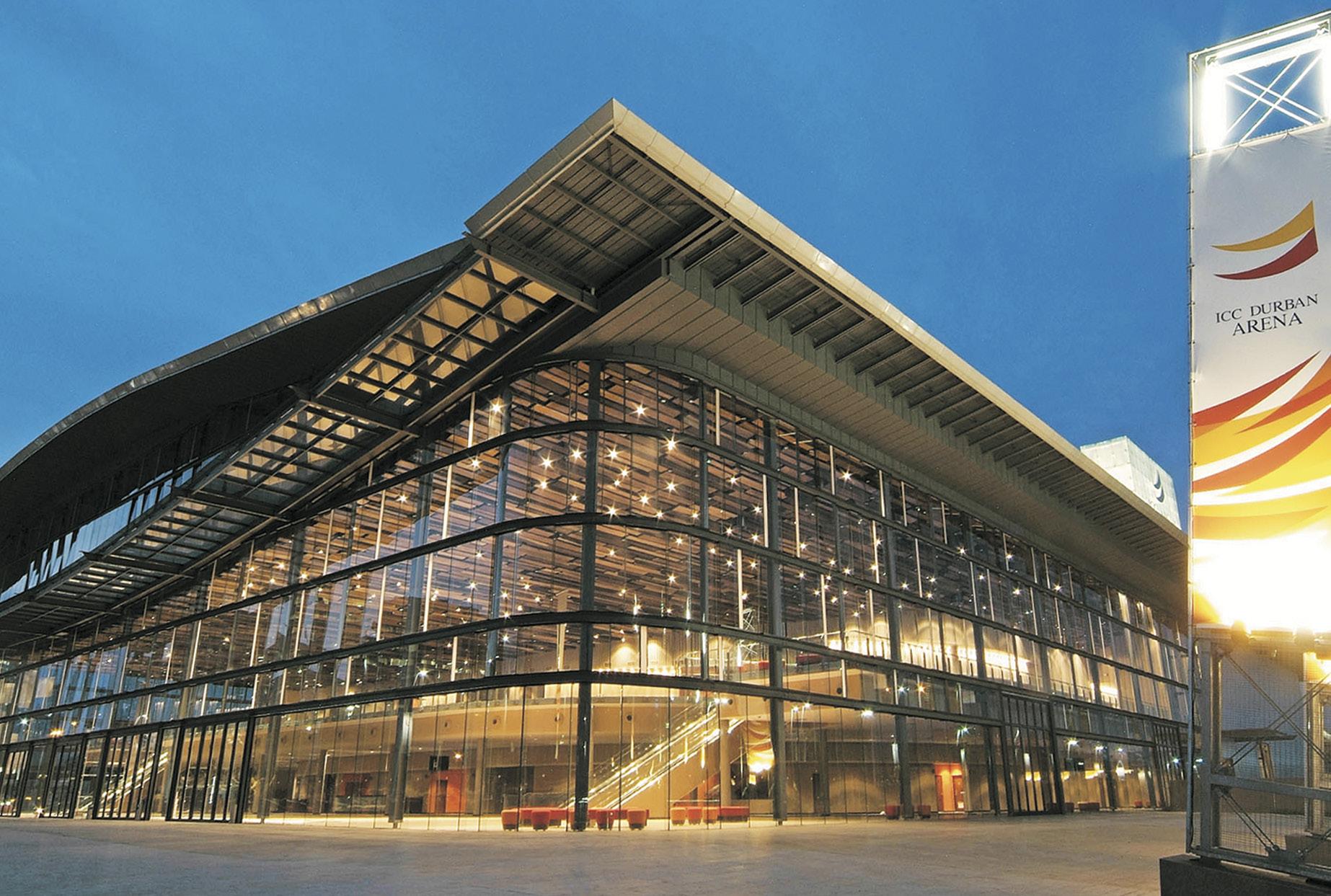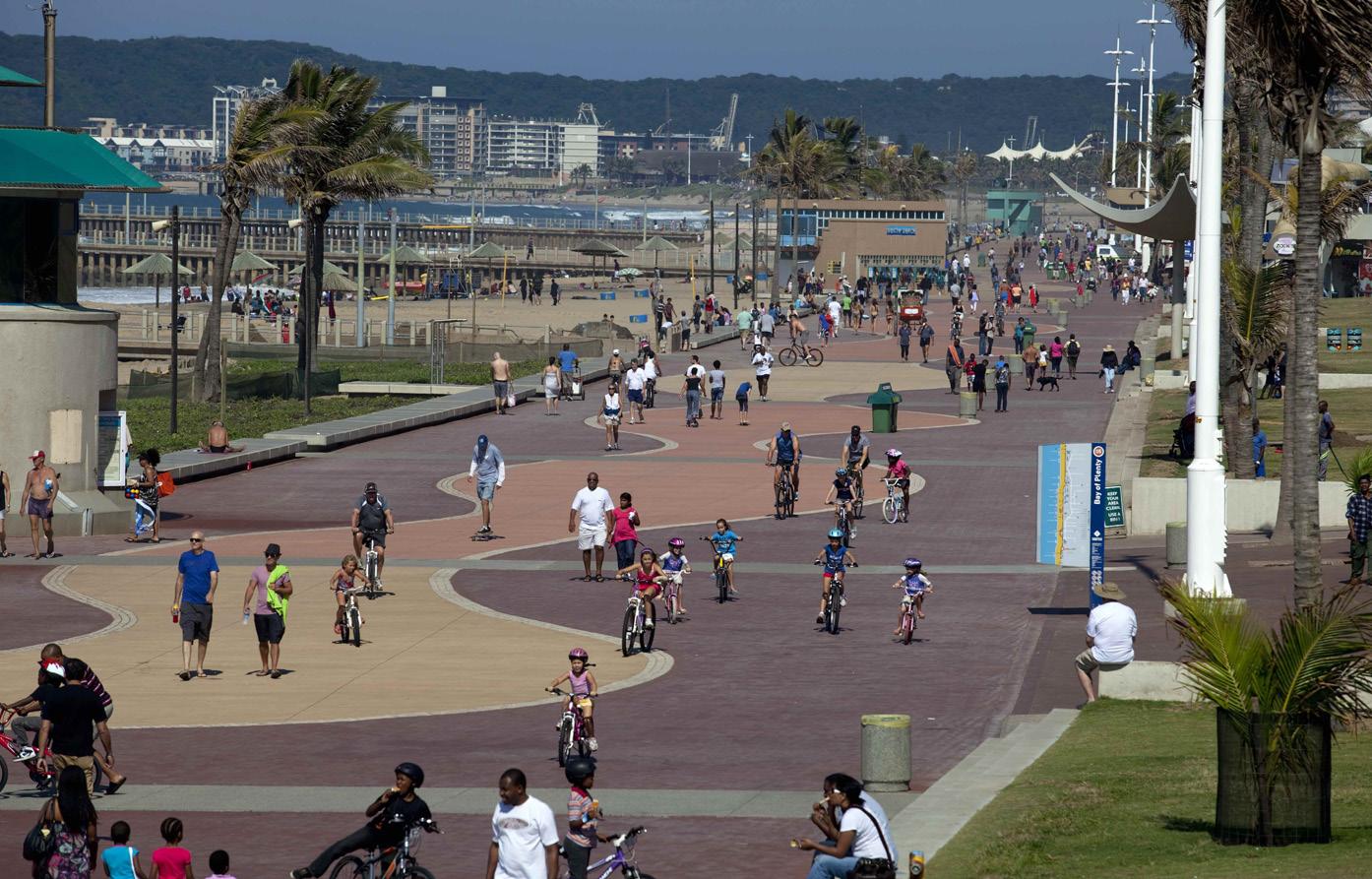
14 minute read
SA CITIES NETWORK: INTERVIEW WITH CEO SITHOLE MBANGA
SA CITIES NETWORK
SA Cities Network CEO Sithole Mbanga has been with the organization since 2002 and probably knows its story and can unpack its rich journey better than anyone. This year Mbanga and his team are looking forward to the release of their next edition of the State of Cities Report which will tell a story of the country’s evolving urban development journey. Mbanga was previously the Local Government Coordinator at the National Business Initiative (NBI) and was involved with conducting capacity building training in Municipal Service Partnership (MSP) and participated in the development of the then National Department of Local Government’s (DPLG) national policy on Integrated Development Planning (IDP). Municipal Focus magazine caught up with Mbanga for a conversation about what can be expected from the SA Cities Network (SACN) in 2022 and beyond.
Advertisement

SA Cities Network CEO Sithole Mbanga
As the CEO of the SA Cities Network (SACN), what are your most important priorities?
SM: The SACN was born out of a need and desire by the founding mothers and fathers of democratic local government to learn from each other and share best practice on how to govern and manage cities better by focusing on;
1) creating inclusive cities. 2) building sustainability and resilience. 3) good governance. 4) economic development, as well as 5) long-term city development. The SACN therefore nurtures and facilitates peer to peer learning based on the above subject matters, informed by empirical research and producing evidence based policy.
On the main there are two issues:
1) The CEO has to ensure that the organisation remains true to its founding principles of sustainably focussing on the city development agenda whilst remaining relevant to the times in which it exist and 2) Building expertise and capacity to deliver on the organisational mandate, both within and outside the SACN itself.
What are the challenges that your organisation faces currently?
SM: Balancing divergent and forever shifting research priorities of its member cities on the one hand, and whilst on the other hand, juxtaposing the research information requirements of a support system that must be fed with policy ingredients that make cities stronger, competitive and enabled to make our economy competitive and job creating, and equally able to sustain lives of communities that live in and make a living out of cities
Would you please unpack the State of Cities Reports (SoCRs) which your organisation produces; what are they all about and what type of insight do they provide?
SM: SoCRs offer research supporting the policy, planning and decisionmaking work of urban actors across different sectors of society. The reports present five-year perspectives on progress in South Africa’s largest cities. More specifically, evidence, analysis and insight into the development performance of and trends in metropolitan municipalities via city data profiles. They further thematically analyse how these cities have addressed challenges, utilised opportunities and effected change during these periods.
Finally, they communicate important messages about what is required from and should be on the agendas of urban development actors, particularly incoming city administrations, in the immediate future and beyond. Over the years, SoCRs have accomplished much. SoCRs are crucial South African urban reference publications, narrating South Africa’s unfolding urban development journey and raising the profile of the urban development challenges in the national development discourse. They offer credible and unique knowledge developed by numerous data sources, researchers, institutions and references.
What can be expected from the State of Cities Report?
SM: The State of Cities Report 2021 is anchored on urban governance and it emphasises that for cities to achieve their developmental mandate, that role not only rests with city governments but with all-of-society, re: business, academia, NGO’s and the public at large. To do this, city governments need to recognise the need to form alliances with these development partners to address any challenges and develop solutions that it may face. This focus is born out of the understanding that when the White Paper on Local Government was developed and adopted by Cabinet about 20 years ago, it was an expectation that all-of society would work together to achieve development in cities in line with the intergovernmental relations tools that exist in the country.
Obviously as the local government sector evolves with more demands placed on city governments, in some instances this collaborative objective of the White Paper has been eroded slowly with an expectation that cities can-do-it-all on their own. In this iteration of the State of the Cities Report, it is demonstrated that collaboration and co-creation in urban governance is still required and the publication demonstrates through a thematic focus, cases studies where this has been achieved and the impact it has had on the development goals of cities. On the inverse, the document shows what happens when this collaboration is ignored and it also emphasises the need to strengthen mutual respect and coordination of efforts by various spheres of government for development targeted at cities.
The document ultimately provides a strong agenda/roadmap for the 20212026 administration to ensure that the urban governance improves through an all-of society approach. If this agenda is implemented, it will lead to greater ownership of the challenges that are faced by cities and this will spark innovative ways to address these through leveraging of resources and ideas by all.
Have previous editions of the State of Cities report focused on the same issues or does the scope change from time to time?
SM: The structural scope of SoCR 2021 is similar to SoCR 2016. But for the first time the SoCR thematically focuses explicitly on issues of urban governance concentrating on cooperative governance and the all-of-society approach. The Report acknowledges that the discourse around cooperative governance and an all-of-society approach is not new. It has been mentioned in previous SoCRs in the context of urban governance but emphasises that it remains very relevant.
Cooperative governance and all-ofsociety practices are increasingly important for South African cities, especially in a climate of dwindling state resources but growing public demands at the local level for health, economy and social security, and when developmental outcomes are the mandate of or dependent upon other urban actors.
These practices further underpin the National Development Plan, Integrated Urban Development Framework and international instruments, such as the SDGs, and are central concerns that the District Development Model (DDM) is trying to address. However, despite policy support and commitment, these practices are not widespread and not always successful – their use has been haphazard, with isolated instances of (good) practice, rather than broad application.
What will it take to rebuild our cities from crises?
SM: Cities have been driving growth and generating almost two-thirds of the country’s economic activity and despite everything that is going on at a national level, cities remain well positioned to take a leading role in South Africa’s economic recovery and development. However, many of the issues and solutions are not exclusively within the mandate of local government, and so intergovernmental coordination and the activation of communities become important. Increasing economic and social inclusion will increase the sustainability and competitiveness of cities, and of the national economy. Good leadership and management are critical, and special attention must be paid to sustainable development and encouraging active citizenship.

There is an opportunity here; we need to take it before the next crisis has a chance to hit. Cities have been driving growth and generating almost two-thirds of the country’s economic activity and despite everything that is going on at a national level, cities remain well positioned to take a leading role in South Africa’s economic recovery and development. However, many of the issues and solutions are not exclusively within the mandate of local government, and so intergovernmental coordination and the activation of communities become important.

Increasing economic and social inclusion will increase the sustainability and competitiveness of cities, and of the national economy. What the past few months has shown us is the power of communities, and what can be achieved by an all-of-society effort. We need everyone to collaborate, and partner to drive the recovery of our cities from these attacks. Good leadership and management are critical. Cities have been driving growth and generating almost two-thirds of the country’s economic activity and despite everything that is going on at a national level, cities remain well positioned to take a leading role in South Africa’s economic recovery and development.

Revenue collection is a major problem for SA cities; what is your take on the recent aggressive revenue collection initiative launched by the City of Tshwane?
SM: Cities need to be financially sustainable to meet their developmental objectives. While they receive grants from national and provincial governments, the bulk of their revenue comes from the levying tariffs on properties and distribution of water and electricity. When such revenue is either not collected or users and property owners do not honour their obligations to pay for services rendered, it then compromises the ability of cities to render these services sustainably and reliably. So, while it has been the City of Tshwane in the spotlight on this matter of revenue collection, other cities have been embarking on an aggressive revenue collection over time and this is one of the ways to ensure that financial health of cities is improved.
Obviously, while these revenue collection “blitz” will yield revenue in the short term, what is important is to ensure that revenue collection is optimised for the long term and this will require in some instances reengineering of revenue processes in cities, better human resources management and intergovernmental relations while still sustaining the message of user-pays-timeously for sustainable rendering of services.
One of South African Cities Network’s programmes is the Inclusive Cities Programme, tell us what the programme is about and what does it seek to achieve?
SM: The goal is for SACN to contribute towards safe, spatially transformed and interconnected communities with equitable access to services, social and economic opportunities, especially by the most vulnerable such as children, youth, women and people with disabilities. In this area of work cities are exploring ways of achieving spatial integration through co-creation and implementation with non-government actors outside of government, looking at the efficacy of policy instruments to achieve spatial integration and advocate for policy change where such is needed.
Our work supports the national government’s Integrated Urban Development Framework and focuses not only on how cities are designed but to sustainable human settlements, urban transportation, access to land for private and public use, incorporation of sustainable development in space planning, addressing governance and financing impediments to spatial transformation through an all-ofsociety approach.
This also includes placing young people at the centre of spatial development by engaging them on an ongoing basis on the future cities they would like to see and giving young people an opportunity to conceptualise it and share what changes they would like to see given that they will be the inhabitants of that future.
The programme has also elevated the need for cities to ensure urban safety through a long-standing partnership with GIZ in which we explore ways of achieving urban safety through design, collaboration, policy and practice. The work done on urban safety has been documented in the annual publication; State of Urban Safety Report which not only aggregated the annual crime statistics per metropolitan area, but provides practice notes on what cities are doing and also offers some policy considerations towards improving urban safety. The rationale for this emphasis on urban safety is that while cities may address the apartheid spatial design elements of cities, if there is no sense of safety among those that live, transact and transit these spaces daily, it has an impact on social well-being, the economy and the whole notion of liveability is lost.
The work done by cities in this thematic area is in a form of research and policy analysis, case studies, learning networks among urban safety, built environment and governance practitioners - as well as ongoing facilitated all-of- society- dialogues on the theme as it relates to space, but importantly, through the Healing Fields work which recognises that while we may be focusing on ‘healing’ space, there is a bigger healing that needs to take place among those that are entrusted with driving spatial integration if their efforts are to yield any positive results.

Would you please explain the South African cities’ Good Hood Stories campaign that was embarked on last year and what it was intended to achieve?
SM: Within the SACN, the Built Environment Integration (BEI) programme was established to support local government practitioners who plan and implement spatial transformation and integration in the built environment and to drive a practitioner-centric research agenda to understand how and why spatial transformation is being hindered.
One of the BEI programme’s methodologies has been the use of a case-study approach to provide an indepth understanding of how different spatially transformative projects play out in respective metros. Aside from the work of SACN, municipalities in South Africa are undoubtedly going through a difficult time.
This has been particularly true since the outbreak of the Corona Virus and the multi-dimensional pressures the pandemic has placed on municipalities. Yet even before the outbreak, there has been a growing sense of dissent and unhappiness from residents towards municipalities.
While the cause for residents’ discontent has no doubt been entirely legitimate, there have nonetheless been cases of exemplary work from all sectors of society that should be recognized and celebrated.
The project’s objective is to: Celebrate cases of good practice in cities across South Africa and demonstrate that good things are happening in our cities by different sectors of society.
What is on SA Cities Network plans for the year 2022?
SM: 2021/22 for the SACN has focussed on reviewing, engaging and defining how we work with cities during this new term of office. We have spent time with city management trying to define what success would look like for cities in the next five years.
Out of the above we now know the areas of focus that each city would like to focus on and we are clear of collaborations to be established in our all-of society approach. This has led to our refined programmatic work which will be implemented in 2022 onwards with emphasis of application of knowledge in cities based on identified challenges.
The success of this will be city mayors owning the work of the SACN and therefore we will be focusing on putting mayors and city managers at the centre of our work. Our new strategy is about continuity and change, reflecting that the organisation will continue with ongoing commitments and projects, while shifting strategically to be much closer to cities in order to understand and respond to their pressing needs. Throughout the course of the year, the SACN will continue with ongoing commitments and projects, including the rollout of the State of Cities Report and its 20-year celebration. The year 2020 marked a crucial time in the history of the government in South Africa.

Twenty years ago - 5 Dec 2000, the first democratic local government elections were held. The transformation of local government aimed to remove racially-based governance and make it a vehicle for the integration of society and the redistribution of municipal services from the well off to the poor. SACN along with its partners CoGTA, SALGA to name a few, will celebrate the achievements of its role in helping shape the sector during Urban Month in October 2022 by creating a platform to share and learn from good practices and innovation and showcase achievements. We will reflect on the role SACN played in its 20 Year journey of local government transformation.










